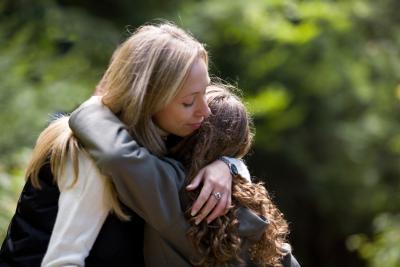If you have an anxious child, you have one who is fearful and typically nervous. Many times, anxious children are too embarrassed to tell you the real problem, so when you ask, they might be secretive and tell you they feel sick, tired, or even that they are fine. If you do nothing to help an anxious child, he might start avoiding situations that produce the anxiety, which can result in isolating behavior, skipping school or drug or alcohol abuse.
Children With Anxiety
Children with anxiety worry excessively about any number of things. They might worry about something that happened in their past, about being accepted by kids at school, about something happening in your family or about doing well in school or sports. A child might not realize that she is worrying more than what is considered normal, so you need to recognize the signs. Determine whether your child worries or is afraid about events that are going to happen far in the future, is a perfectionist and is extremely self-critical, blames herself for any tragedy, is afraid something bad is going to happen to her and needs constant reassurance. An anxious child may cry often, act sad, become easily distressed, have headaches or stomachaches and have difficulty sleeping. If you notice some or all of these symptoms, get an evaluation from a therapist or a counselor to determine whether your child can benefit from anxiety therapy and avoid any further suffering.
Cognitive-Behavioral Therapy
Most children’s treatment for anxiety is cognitive-behavioral therapy, which consists of skills training and applying the skills. First, children learn techniques to reappraise whatever makes them fearful. Children also learn how to relax and how to reward themselves. The therapist typically has the child list his fears, from least to worst, and works on the least-fearful situations first, while working up to the worst.
Family Treatment
Another effective treatment method includes the family as well as the anxious child. When cognitive-behavioral therapy includes the family, this can be even more effective that having the child in therapy alone, according to Dr. Jeffrey J. Wood, writing for the “Psychiatric Times.”
Parent-Child Interactions
Family cognitive-behavioral therapy addresses parent-child interactions. A parent who is too intrusive, taking over tasks a child should be doing herself, could be contributing to the problem. This type of parenting can lead to retarding a child’s level of functioning, and it can foster an immature child. Examples of being too intrusive are helping your school-aged child with daily routines, such as getting dressed, treating your school-aged child like a baby by showing excessive physical affection or using immature language and by not respecting your child’s privacy. By doing for your child, you are not giving her a chance to develop and create feelings of mastery over her environment. When a child feels confident, she feels courageous, not fearful.
Examples
Examples of parent-training therapy include teaching you how to give your child choices when he can’t decide rather than simply choosing for him, allowing your child to struggle with a task instead of doing it for him, and understanding and accepting your child’s emotions instead of criticizing them. By combining parent training with cognitive-behavioral training for a child, you should see improvement within several months. Otherwise, you might need to reevaluate the therapy and possibly change therapists.





